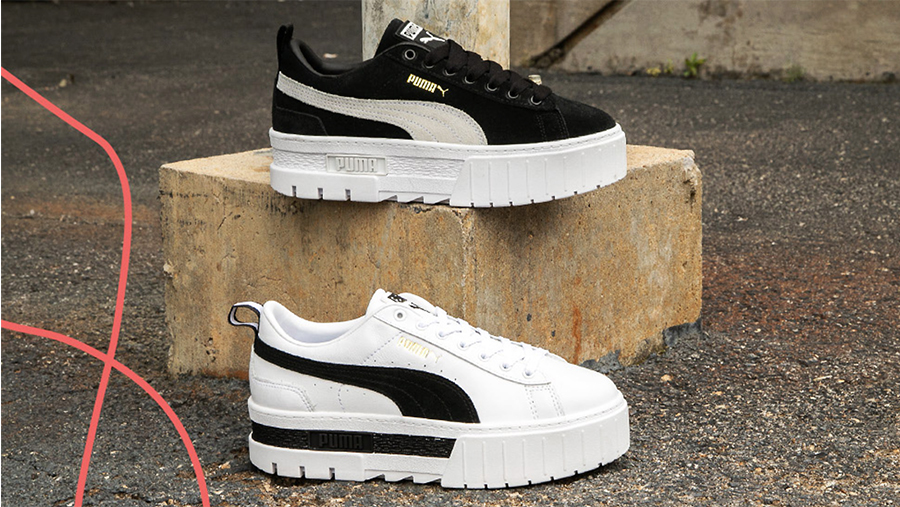Genesco Inc.’s recovery gained further momentum in the second quarter with strong gains at Journeys and its U.K.-based Schuh chain, but officials warned that supply chain disruption continues to deplete inventory levels and is expected to drive higher freight costs in the quarters ahead.
The second quarter ended July 31 saw Genesco reach a new record for profitability for its footwear businesses. Genesco shifted to focus solely on footwear following the sale of the Lids chain in 2019. The profit improvement was boosted by much stronger revenue, robust full-price selling and good expense management.
“Our outperformance was driven by better than anticipated results across the board with all businesses exceeding pre-pandemic profit levels,” said Mimi Vaughn, president and CEO, on a conference call with analysts.
Compared to the fiscal 2020 quarter two years ago, revenue improved 14 percent, and adjusted operating income surged 346 percent.
Compared to the year-ago quarter, distorted by temporary store closings due to the pandemic, net sales increased 42 percent to $555 million. Wall Street’s consensus estimate was $522.4 million. Operating income on an adjusted basis came to $21.1 million this year compared to an operating loss of $20.9 million last year.
Net earnings came to $10.9 million, or 74 cents a share, compared to a loss of $18.9 million, or $1.33, a year ago and $0.8 million, or 5 cents, in the second quarter of fiscal 2020. Adjusted to exclude non-recurring items, net earnings reached $15.3 million, or $1.05, compared to a loss of $17.4 million, or $1.23, in the 2020 quarter and earnings of $2.5 million, or 15 cents, in the 2019 second quarter. Results were well above Wall Street’s consensus estimate of 1 cent.
Drivers of the improvement included a 97 percent hike in digital revenue from the 2019 second quarter. Digital grew to 19 percent of the retail business compared to 10 percent in the 2019 second quarter.
Gross margins reached 49.1 percent, up 640 basis points year-over-year and 50 basis points against the second quarter of 2019. The increase was due primarily to higher full-price selling at Journeys, partially offset by a mix shift towards Licensed Brands and higher shipping and warehouse expense in retail businesses driven by the increase in e-commerce penetration over the last two years.
Adjusted selling and administrative expense decreased 270 basis points year-over-year and were down 230 basis points versus the 2019 second quarter. The decrease from the 2019 second quarter was due primarily to reduced occupancy expense and reduced selling salaries, partially offset by increased performance-based compensation expense driven by improved profitability and increased marketing expenses. The reduction in occupancy expense is driven by the U.K. government property tax relief program and benefits from its ongoing lease cost initiative.

Journeys Boosted By Demand For Casual Footwear
Among its segments, sales at Journeys were up 25.2 percent to $346.3 million. Operating profit tripled to $30.4 million from $10.2 million a year ago. Vaughn said Journeys achieved record revenue and operating profits in the period and marked its third consecutive quarter with record profitability.
“The current fashion cycle, which has been shifting toward a more casual product, plays into Journeys’ wheelhouse with strength in the assortment across the board, highlighted by the balance in its top 10 brands, evenly split in the quarter between casual and fashion athletic,” she said. “On-trend merchandise assortment and effective consumer engagement through social and other channels fueled strong demand and full-price selling, with particular strength in women’s and kids.”
Vaughn said the chain continues to “further separate ourselves from the rest of the industry as the destination for fashion footwear for teens.” Strong vendor partnerships helped overcome supply chain disruptions to help Journeys “secure supply of the brands and styles most coveted by its customers.”
Both store and e-com revenue was up for Journeys compared to pre-pandemic levels, with digital leading the way. Much higher conversion rates and transaction size drove store volume.

Schuh’s Q2 Sales Climb 48 Percent
At Schuh Group, revenues jumped 47.9 percent to $106.1 million. The segment achieved an operating profit of $3.6 million against a loss of $6.8 million a year ago. Schuh delivered a “solid” top-line increase compared to the 2019 second quarter as government-mandated lockdowns were lifted and the retail sector saw largely uninterrupted operations for the first time since before Christmas.
“Schuh’s store business rebounded steadily, driven by pent-up demand and our successful efforts to drive sales of multiple pairs,” said Vaughn. Online contributed almost 45 percent of total sales as Schuh retained much of the online gains from the year-ago period and capitalized on a strong overall shift toward e-commerce in the U.K. Product trends at Schuh were similar to Journeys with a slightly heavier tilt toward fashion athletic.
Johnston & Murphy Group’s sales grew 154 percent to $61.2 million. Operating profits were $3.95 million, rebounding from a loss of $18.2 million a year ago. Johnson & Murphy’s pace of recovery was stronger than expected, boosted in part by strong demand for its new athletically-inspired casual assortment. Second-quarter sales were near pre-pandemic levels, with strong full-price selling driving the profit rebound.
Vaughn said, “Launches of the athletically-inspired Amherst and Activate collections and expansion of the J&M golf collection were highly successful this spring and another major step toward moving the brand beyond its dress shoe origins.”
Licensed Brands’ revenue doubled to $41.7 million from $18.8 million a year ago, reflecting the growing contribution from the Levi’s licensed footwear business acquired in January 2020. Operating profit in the Licensed Brands segment reached $991,000 against a loss of $1.2 million a year ago, although below plan due to higher freight costs.
Inventory at quarter’s end was down 27 percent compared to the 2019 second quarter on sales up 14 percent on a two-year basis. Thomas George, interim CFO, said Genesco remains challenged keeping up with the pace of consumer demand amid delivery delays.
Continued Sales Improvement Seen For Third Quarter
Looking ahead, limited guidance was provided for the third quarter, given the uncertainties related to the delta variant. Sales in the third quarter are expected to be up in the mid-to-high single digits against the third quarter of 2019. The growth is mainly due to continued strength from its Levi’s business and growth at Journeys and Schuh. Johnson & Murphy will likely remain under fiscal 2020’s sales levels. Overall sales in August are tracking ahead of pre-pandemic levels in a more normalized back-to-school selling climate.
Gross margin rates in the third quarter are expected to be down to the second quarter of 2019 due to substantial pressure from import freight increases at Johnston & Murphy and Levi’s due to supply chain disruptions. Operating income is projected to be similar to fiscal year 20 levels with slightly less SG&A leverage versus the second quarter.
Asked about the freight costs in the Q&A session, George said Genesco is planning $7 million in incremental freight costs in the quarter against the comparable 2019 quarter due to factors such as additional vessel charges, increased use of air freight and significantly higher container costs. Said Vaughn, “It’s much more pressure in the third quarter than it was in the second quarter.”
Vaughn, however, expressed confidence in Journeys’ ability to restock, noting that Journeys has been chasing inventory since the onset of the pandemic and has been able to deliver strong growth over the last few quarters. Ordering early and in larger quantities than typical has helped mitigate some inventory pressures. She also said partners continue to prioritize delivery to Journeys. Vaughn said, “We’re an important partner to our brands. They’ve worked with us as much as possible. Journeys always gets more than its fair share of product.”
She also said that with supply chain issues possibly extending until spring, both Journeys and Schuh reduce risks by having a diverse base of suppliers. Vaughn said, “We’re seeing good product flow right now, but it’s lower than we would like.”
Photos courtesy Journeys
















